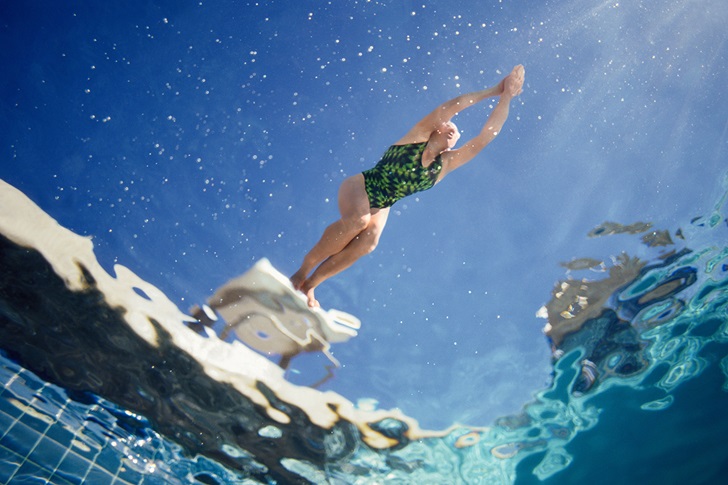What is the Difference Between Above-Ground and In-Ground Pools?

Above-Ground Pools vs. In-Ground Pools: The 6 Biggest Differences
Are you curious about whether you should choose an above-ground pool or an in-ground pool? If so, you’ve come to the right place. From installation to safety, we’re covering all the major differences between above-ground and in-ground pools.
These six differences are the biggest distinguishing factors between an in-ground and above-ground pool.
1. Look and Feel
In-ground pools are set into an excavated space in the ground, while above-ground pools sit on top of it. So, it’s pretty easy to tell the difference between the two. When it comes to look and feel, many people prefer the appearance of an in-ground pool to an above-ground pool, but it’s really a matter of personal preference.
Generally speaking, above-ground pools have fewer customization options and shapes. They’re usually round or rectangular, and they don’t get much deeper than four feet. In-ground pools, on the other hand, are completely customizable. From shape and size to depth and add-ons, you have more control over the look and feel of an in-ground pool.
Even so, both offer a variety of styles and customization options.
2. Cost
In-ground pools are more expensive than above-ground pools, both for initial costs and ongoing expenses. Above-ground pools are more budget-friendly.
On average, an in-ground pool costs between $28,000 - $55,000, versus the average cost of an above-ground pool, which can range from $1,100 - $3,500 (without installation), or up to $4,977 with installation.
The cost difference is explained by a combination of excavation fees, construction costs, permits, safety fences and more that are involved in installation of in-ground pools. There are simply more costs associated with installing an in-ground pool.
Related products




3. Installation
Installation is another area where in-ground and above-ground pools differ significantly. Most above-ground pools are DIY-friendly and generally take between 24-72 hours to install.
On the other hand, in-ground pools require a professional pool builder, and installation can take between 2-8 weeks (and sometimes even longer).
Additionally, most above-ground pools can be taken down and put back up with relative ease.
4. Maintenance
Both in-ground and above-ground pools require maintenance to remain operational and in pristine shape. For example, they both need regular cleaning, chemical balancing and filtering.
However, in-ground pools typically require more ongoing upkeep. From winterizing to resurfacing, there are many ongoing maintenance tasks that in-ground pools need which above-ground pools don’t.
Keep in mind, though, that along with the ongoing maintenance come the added benefits of durability and longevity. The average above-ground pool lasts between 10 and 15 years, compared to in-ground pools, which can last 50 years.
5. Backyard Space
In-ground pools generally require more backyard space than above-ground pools. Of course, this depends on the size of pool you want, but above-ground pools require minimal landscaping and safety installations.
6. Types of Pools
There are several types of above-ground pools. They are made from various materials like steel, aluminum, resin, vinyl, fiberglass and plastic. From the inflatable pools you can buy at any major supercenter to the traditional options found at specialty pool stores, there’s no shortage of choices when it comes to above-ground pools.
The same is true for in-ground pools. Most in-ground pools are made from gunite (or concrete), fiberglass or vinyl. In-ground pools also have finishing material choices, which include plaster, aggregate, tile and more.
Should I Purchase An Above-Ground Pool or An In-Ground Pool?
Ultimately, the right pool for you depends on your lifestyle and needs. For example, your location may play a factor in your decision. If you have unusually hard ground, short swim seasons or frost heaving, or if you live in an area prone to flooding, an in-ground pool may not be practical.
Otherwise, choosing a pool comes down to comparing their differences and determining which works best for your environment and lifestyle. As long as you develop a maintenance routine and purchase the right pool equipment, you’re bound to get plenty of enjoyment from your pool, whether it’s above- or in-ground.

